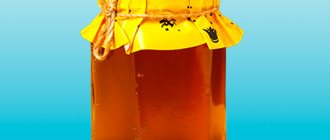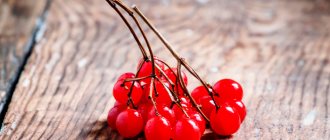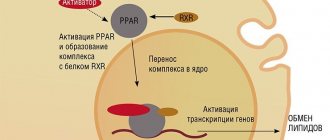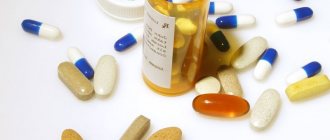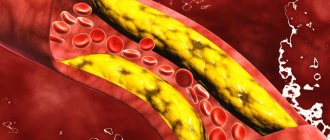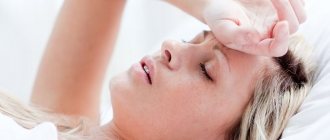The most dangerous manifestation of arrhythmia is tachycardia, a disease of modern people. In most cases, the disease is due to the fact that the current generation lives at a crazy pace. People do not have enough time to cope with their workloads at home and at work. They are constantly accompanied by emotional stress. The stress hormone is released. Distant ancestors also had it, but for them it arose during an attack by an animal or another tribe. The person responded with some action, and the tension was released naturally. Unlike modern times, when the release of the hormone is not discharged, it attacks the heart first.
Arrhythmia gradually develops. Isolated cases of increased heart rate are a reaction to fatigue, lack of sleep, etc. When the symptoms become permanent, then the help of a doctor is needed. For any arrhythmias, thyroid function is checked. Sometimes a pulse disturbance begins against the background of a pulse failure. An unstable rhythm is often a companion to diabetes.
Signs of tachycardia
The second name of the syndrome is cardiac tachyarrhythmia. During an attack of tachycardia, the heartbeat exceeds 100 beats/minute. This can occur due to physical overload and severe anxiety. The heart itself reaches a “crazy” rhythm. Also, the reason lies in some serious diseases.
Not only the frequency of contractions is important, but also changes in rates, which can only be detected on an ECG. Chaotic and rapid contractions prevent the ventricles from filling properly with blood and reduce cardiac function. The most unfavorable outcome of tachycardia is cessation of blood flow.
Tachycardia is manifested by various symptoms, which depend on the cause of the disease:
- confused rhythm;
- cardiopalmus;
- sweat (cold);
- feeling of danger and fear;
- pain in and behind the chest;
- fainting;
- general weakness;
- dyspnea;
- dizziness.
In some cases, the disease is asymptomatic and unnoticeable. Against this background, complications develop in the form of stroke and other critical conditions. Therefore, it is so important to notice the first signs of tachycardia. Treatment of cardiac tachycardia is a complex therapy, including lifestyle correction.
Age-related heart rate norms
In adults, a normal rhythm is considered to be about 60-70 beats per minute. Below or above these limits is a warning about abnormalities in the body. Doctors consider a slow heartbeat - bradycardia - to be a more dangerous phenomenon. Rapid pulse - tachycardia, when the brain experiences a lack of oxygen. It compensates for the deficiency in two ways: by increasing blood pressure or increasing heart rate. Their frequency depends not only on external factors and chronic diseases, but also on a person’s hereditary predispositions.
| Age (years) | Average value (beats per minute) |
| Up to 1 year | 140 |
| 1‒2 | 124 |
| 4‒6 | 106 |
| 6‒8 | 98 |
| 8‒10 | 88 |
| 10‒12 | 80 |
| 12‒15 | 75 |
| 15‒50 | 70 |
| 50‒60 | 74 |
| 60‒80 | 79 |
Standard boundaries depend on a person’s age, but we must not forget about individual characteristics. Anything higher is an increased heart rate. An adult is diagnosed with tachycardia when his pulse exceeds 90 beats.
Therapy
Before starting therapeutic actions, you need to find out the cause of the rapid heartbeat. Studies of the heart and blood vessels, as well as the endocrine system and hormones will help. Treatment of tachycardia depends on its type and underlying cause; it is prescribed exclusively by a doctor based on the results of a complete examination of the patient and prognosis.
Therapy includes taking antiarrhythmic drugs, monitoring chronic diagnoses, adjusting diet and physical activity. Alternative medicine offers many recipes that help restore heart function and improve general condition. They are also useful for pregnant women who should not abuse medications for objective reasons.
Treatment of tachycardia (classical medicine)
Before starting treatment, the doctor must determine what causes the development of the disease and identify the type of tachycardia. In some cases, no treatment is required. To normalize your heart rate, it is enough to simply normalize your work and rest schedule and avoid stress.
However, in most cases, pathological tachycardia requires drug therapy. The attending physician should prescribe medications, determine the duration of the course of treatment and the frequency of doses, taking into account the form of the disease, the presence of concomitant pathologies, as well as the individual characteristics of the patient’s body. Self-medication is unacceptable and can lead to the development of a number of serious complications.
Therapy for tachycardia is usually etiotropic, that is, aimed at the cause of increased heartbeat. Most often, the cause of the disease is pathologies of the cardiovascular system, autonomic nervous system, and endocrine system.
To prevent attacks of tachycardia, antiarrhythmic drugs are indicated. If the patient has an attack, you should immediately stop any physical activity and take medications prescribed by your doctor.
Alcohol tinctures
Pharmacy chains sell various herbal tinctures. But when prepared at home, their effectiveness is many times higher. The general recipe for the tincture is 10 g of dried herb/100 g of alcohol. Infuse for 20 days in a dark and secluded “corner”. Preventive course – 2 months three times a day. The tincture can relieve an attack of tachycardia at a critical moment; you need to dilute a teaspoon of the medicine in cool water (100 g) and drink it immediately.
Hawthorn tincture
The healing tincture is prepared simply: fruits (20 g)/alcohol 70% (200 g). Infuses for 2 weeks. Before use, you need to dilute a small spoon of tincture in water (1/5 cup). Drink three times 15 minutes before meals daily. Hawthorn tincture will quickly relieve an attack of rapid heartbeat - within an hour you need to drink three times the recommended dose.
Tincture of elecampane
Dilute dry elecampane rhizomes (100 g) with alcohol (2 cups). It is infused strictly for 2 weeks and taken three times a day, 15 minutes before meals, one teaspoon of tincture.
Lemon tincture
To the lemon juice of one fruit, add fresh black rowan juice (1/2 cup), cranberry juice (1.5 cups), carrot juice (200 ml). Pour vodka (1 glass) into the mixed solution. Mix the composition thoroughly. Drink the drink three times a day (20 ml each) an hour before meals. Before each use, the tincture should be shaken thoroughly.
Multicomponent tincture
The medicine is prepared according to the following recipe from pharmaceutical products:
- eucalyptus tincture (50 ml);
- mint (25 ml);
- hawthorn, valerian, motherwort (100 ml each);
- clove buds (10 pcs.).
All ingredients are mixed and infused for 10 days. A teaspoon of tincture is diluted with water (1/2 cup) before use. Treat three times a day.
First aid for high heart rate
Increased tachycardia can become a serious cause of critical condition of the body. To relieve symptoms, it is recommended to do the following:
- wash your face with cold water;
- drink a glass of water;
- ventilate the room;
- unfasten buttons, loosen ties, belts;
- remove outer clothing;
- lie on your side if you feel dizzy or weak;
- massage the eyeballs with gentle movements;
- wait for the ambulance.
It is not recommended to take the signs of tachycardia lightly. Over time, an occasional illness can turn into a chronic form, which can lead to serious consequences.
Phytotherapy
Treatment of tachycardia with herbs has been used since ancient times. Herbal decoctions and tinctures stabilize cardiac function and calm the nervous system. The result will be if you regularly take herbal medicines for three months. Symptoms of tachycardia will pass.
Motherwort and calendula
Brew calendula (marigold) and motherwort in equal parts with boiling water (1 tablespoon/200 ml). Let the broth brew for a couple of hours, strain and drink a glass after lunch.
Melissa
Dilute one large spoon of crushed medicinal lemon balm with a glass of hot water. Simmer for half an hour in a sealed container. Drink 150 ml warm before meals three times.
White willow
White willow flowers are poured with boiling water - 2 teaspoons / 1 glass, strain and take 6 times a day, 30-40 ml.
Horsetail
Dry grass (a tablespoon) is steamed with a glass of boiling water. The product is infused for only 3 hours. Treat 6 times with one large spoon during the day.
Adonis
Add adonis (2 tablespoons) to boiled water (4 cups). Boil the “potion” for 10 minutes over moderate heat. As soon as it cools down, strain. Drink the tincture three times a day, a large spoon.
Grape leaves
Grape greens are rich in reveratrol, which strengthens blood vessels. Therefore, their use improves blood flow, protects the walls of blood vessels, stabilizes blood pressure and heart rate. The remedy against tachycardia is easy to prepare: crushed grape leaves (1 cup) are poured with boiling water (4 cups). The infusion is boiled for 7 minutes, and after cooling it is filtered. Drink half a glass twice a day between meals. Course – 20 days.
If you have tachycardia, what should you do?
Many people begin to panic during tachycardia and do not know what to do. At the first symptoms of tachycardia, try to calm down and unfasten your collar to ensure air flow. You can take medicine - tincture of valerian or motherwort helps with tachycardia. There are more effective medications, but they can only be taken as prescribed by a doctor.
In addition, during an attack of tachycardia, washing with ice water or a cold compress on the forehead will help. You should breathe as deeply as possible - this will lower your heart rate.
If attacks recur, you should consult a doctor.
Herbal infusions
The combination of herbal components makes it possible to correct the patient’s condition, taking into account concomitant diseases. They help with high blood pressure, diabetes, stressful situations and heart pathologies.
First collection
- nettle (100 g);
- lemongrass leaves (50 g);
- ginkgo biloba (15 g);
- mistletoe (100 g).
Pour a glass of boiling water over the herbs and steam for 15 minutes under the lid. Take small sips before bedtime.
Second collection
- lemon balm (40 g);
- nettle (20 g);
- linden flowers (40 g);
- chamomile (20 g).
Mix the herbs and pour boiling water - a large spoon per glass. Leave in a sealed container for 5 minutes. Then immediately drink in one gulp three times a day, each time preparing a new portion.
Third collection
- chamomile flowers (100 g);
- mint leaves (20 g);
- lemon balm leaves (20 g);
- heather (50 g);
- sunflower flowers (100 g);
- black currant leaves (50 g).
Combine the ingredients, steam 2 large spoons with two liters of water in a thermos. Infuse for 5 hours, drink a glass three times a day. The taste can be sweetened with sugar and honey.
Fourth gathering
- mint (100 g);
- motherwort (50 g);
- lemon balm (100 g);
- lavender (50 g).
One large spoon of the mixture is poured into a liter of water and boiled for 10 minutes. After cooling, strain the drink and drink 3 glasses a day.
Relationship and reasons for development
Many patients accidentally discover an increased heart rate when measuring their blood pressure. Pathological processes do not have an organic connection, but one of them often provokes the development of the other. In the case of arterial hypertension, the signal is sent from the vasomotor center, and tachycardia occurs when the reflexogenic zone is damaged. There is no direct relationship between the regulators, but a rapid heart rate appears due to increased pressure due to vasoconstriction. Additional stress is placed on the heart muscle, causing it to contract more than usual.
Tachycardia with high blood pressure gradually causes cardiac hypertrophy. The following factors may be the underlying causes of the development of the disease:
- Exposure to stressful situations promotes the production of adrenaline and its release into the blood. It constricts blood vessels and makes the heart beat faster than normal.
- Excessive physical activity leads to increased heart rate due to increased stress on the heart muscle. Gradually, high blood pressure begins to accompany the process.
- With hypertension, a person experiences increased blood pressure, which causes other problems to develop (vascular spasms, ischemia, atherosclerosis, and others). Tachycardia manifests itself as a compensatory mechanism. Its essence is to improve tissue nutrition by increasing the intensity of heart contractions.
- Diseases of the heart, blood vessels and endocrine system can increase blood pressure. Rapid heartbeat in this case is a secondary manifestation against the background of the development of underlying pathological processes.
Increased heart rate with arterial hypotension (low blood pressure) is extremely rare. The patient is recommended to undergo a comprehensive examination to find the cause of the strange deviation. In most people, a similar combination of pathological processes occurs due to blood loss, injury and a malfunction in the autonomic nervous system. Treatment of tachycardia with low pressure consists of eliminating the underlying cause and stabilizing the heart rhythm. If you compare treatment regimens, they are similar, but the selection of medications should be entrusted to a doctor to avoid complications.
Honey recipes
Medicines are made from honey for many diseases, including the treatment of tachycardia. It is worth considering the presence of restrictions - diabetes, allergies to the main healing component.
Sweet balm
- natural honey (1 l);
- garlic (10 pcs.);
- lemon (10 pcs.).
Finely grate the peeled garlic and squeeze out the citrus juice. Knead the garlic pulp, citrus drops and honey, place the resulting consistency in an airtight container. Store for 10 days in a dark, cool corner. Treat with one small spoon 4 times a day, after dissolving the healing “delicacy” in your mouth.
Nut-honey medicine
- natural honey (1 l);
- almonds (100 g);
- walnut (100 g);
- cocoa (100 g);
- dark chocolate (100 g).
Take a large spoonful of this delicious mixture every morning. This medicine should be stored in the refrigerator.
Essential oils
Aromatic oils can also help with “attacks” of tachycardia. To do this, mix the following essential components (10 drops each):
- anise;
- cinnamon;
- lavender;
- Melissa;
- carnation;
- eucalyptus;
- sage;
- thyme;
- mint.
Apply a few drops of the pre-prepared product to a handkerchief and enjoy its aroma correctly - inhale shorter than exhale. You can also rub a mixture of essential oils into the sternum if you tolerate them well.
Preventive measures
Tachycardia takes a long time and is difficult to treat, so it is better not to provoke the disease. Doctors recommend eliminating risk factors to prevent the disease from progressing. Prevention includes simple measures:
- limiting caffeine consumption;
- you need to quit smoking;
- proper diet low in fat;
- monitoring blood pressure, sugar and cholesterol levels;
- maintaining normal weight;
- moderate consumption of alcoholic beverages;
- ability to cope with stress (using relaxation techniques);
- control of medications that cause heart palpitations;
- regular medical examination.
If you have never resorted to herbal medicine before, use the simplest folk recipe. Stock up on pharmacy ready-made tinctures of valerian, hawthorn, motherwort and Corvalol. Take 20 drops three times a day (half an hour before meals).
Any prescription must be previously agreed with your doctor. He will also help you select the optimal phytocomponents for the treatment of tachycardia.
Alternative medicine offers many formulations for the treatment of tachycardia, the main condition for their effectiveness is inner peace. Thoughts are connected with the work of the heart. If you try to minimize risk factors in everyday life - stress, bad habits, advanced conditions of chronic diseases and closely monitor your health, you can cope with the disease. In most cases, tachycardia serves as a signal for lifestyle changes.
